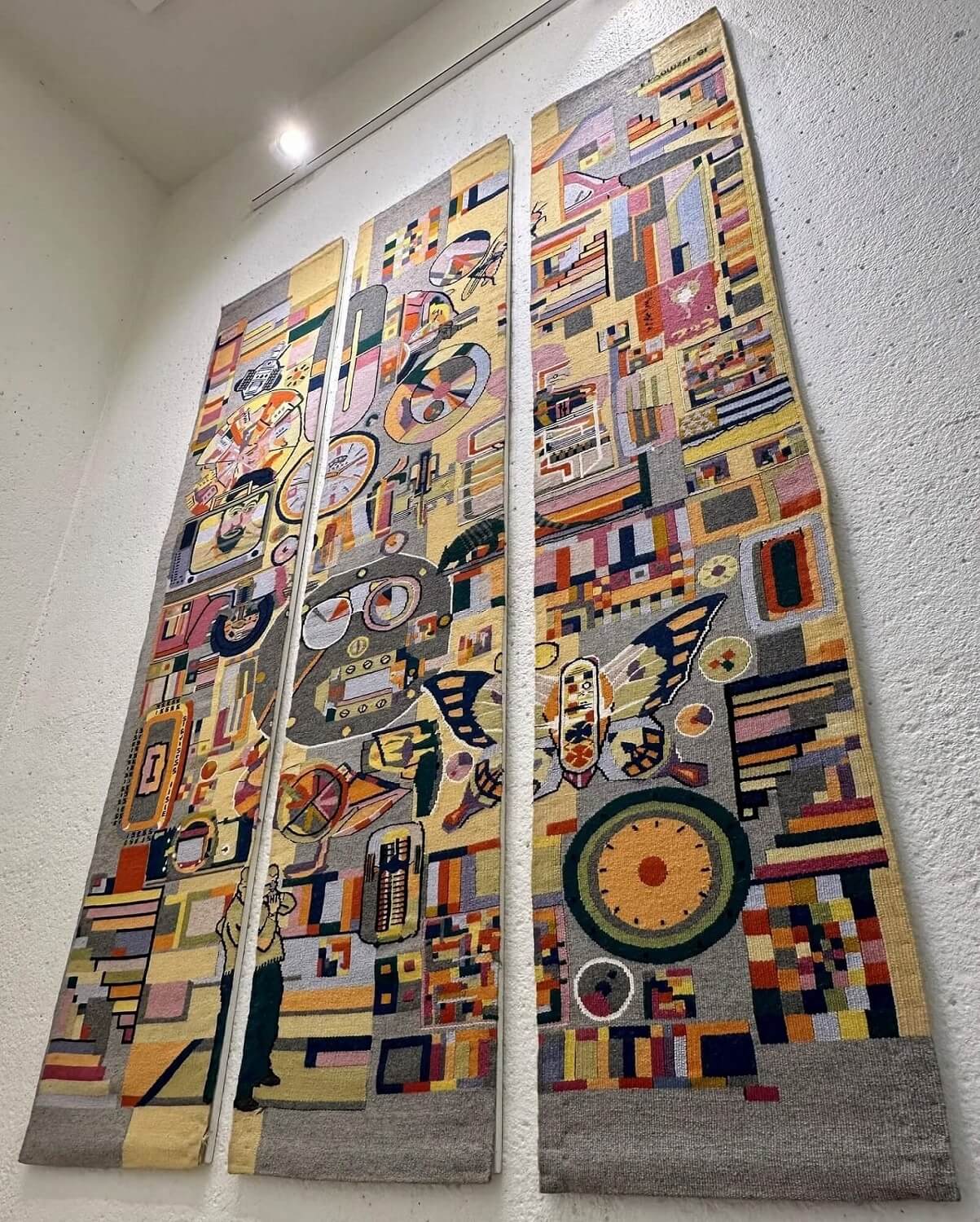
Sir Eduardo Paolozzi was born in March 1924 in Leith, Edinburgh, to Italian parents. Paolozzi is recognised today as one of the pioneers of pop art, with his work reflecting a particular interest in post-war developments in science and technology. Paolozzi worked on a number of public artworks in the 1980s and 1990s, including the mosaics in the London Underground station at Tottenham Court Road and a sculpture for the forecourt of Euston station, both commissioned in the same year as the work for ICAEW.
The colourful tapestry at Chartered Accountants' Hall, titled 'A perspective on innovation' (1981), was woven with a combination of abstract designs and recognisable images from the 1980s against a yellow background. Among the images featured are a satellite, car, clock, laser disc, television, an armadillo, duck and a butterfly. The tapestry also shows a Japanese influence with an image of the Glico running man, a well known landmark in Osaka. The three sections of the tapestry, each measuring 123" by 25", were designed to fit into the vertical bleached oak panels of the Great Hall.
Paolozzi described his aim with the tapestry as being 'to depict our world of today in a manner using the same pictorial style as the Bayeux tapestries in France - to record the images of our time for future years in a proven and permanent material'.

